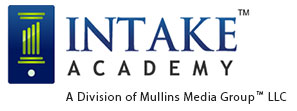Intake Sales Prevention Department
“Confidence is what you have before you understand the problem…”
– Woody Allen
I recently heard a comment like this from the COO of a large PI firm in New England with multiple locations.
“We convert 90% of the cases we want…”
Roughly an hour after making this decree, we played 4 actual intake call recordings from their office. We heard 3 viable prospects hang up without doing anything. In 2 out of 3 instances, qualified callers were screened by the intake team and put on hold for over two minutes, while an attorney was prodded onto the phone to“close the deal”.
When the attorney DID finally pick up the call –the lawyer, and caller for that matter – were exacerbated, curt and just plain unengaged. To make matters worse, the intake team bobbled the hand off with a “lukewarm transfer” to the attorney, so by the time the attorney picked up the call, crucial parts of the story were missing. A warm transfer is when your reception or intake team accurately gathers the caller’s name and key elements of their story and pass the information on to the person they are transferring the call to.
This reminds me of a childhood game “telephone”; you may remember playing a similar game as a kid. A group of kids would sit in a circle, and one kid was given a short set of sentence or story and they had whisper what they read to person beside them. Each person had to whisper the story to the other person. By the time story made it around the entire circle the last person had to say what they heard out loud. Invariably the story was inaccurate, embellished, or just plain wrong by the time the last person said it.
During these particular calls, the tone and attitude we heard from the attorney was “I can’t be bothered with you Ms. Prospect. I’m busy doing important lawyer stuff.” The tone and attitude we heard from the intake team was “I’m not really confident what’s going to happen with you Ms. Prospect. You are an annoying pest, but I’m going to do my job and ask you these screening questions and pass you down the line, so I can do the other more important things I’m supposed to be doing.”
The training debrief on call recordings from that point on was bone crunching;the COO’s cheeks turned grayish peach. Fingers were pointing in every direction. After the initial shock and scapegoating we drilled into the core issues and had a productive conversation to fix the problem areas. The entire team (reception, intake and attorneys) ultimately took responsibility for the blind spot and had new insight and clarity to acknowledge and resolve these stranded opportunities.
Here’s how you can do the same with your team:
Step 1. Record prospect phone calls
Step 2. Review and critique prospect phone calls with staff
Step 3. Identify what worked well on the call
Step 4. Identify opportunities/challenges
Step 5. Identify the exact steps to take in the future to fix any problems
Step 6. Implement the new changes
Step 7. Repeat the monitoring and coaching process to course correct
Implementing this step by step approach to identify hidden opportunities in your practice is simple, but you will need to prepare yourself to be open and objective about what you find. Remind yourself and your team, “nothing happens until something get’s sold.” Every day you are in competition to secure and develop relationships with your prospective clients. Most firms spend tremendous resources to acquire a phone call, how those calls are handled has as much impact on the success of the firm as the marketing investment made to produce the lead. Commensurate thought, energy, effort and focus need to be devoted to your intake process to monitor, measure and coach your team.
So, before you say, “We convert 90% of the cases we want”, consider recording your intake calls and listen to how your calls are actually being handled on a regular basis. Whether you want to know the truth or not you may have more than a few “sales prevention department” moments. Although painful for some law firms, finding hidden opportunities in existing intake and lead generation is far less expensive than spending more on marketing. You’ll be glad you listened in.

Recent Comments